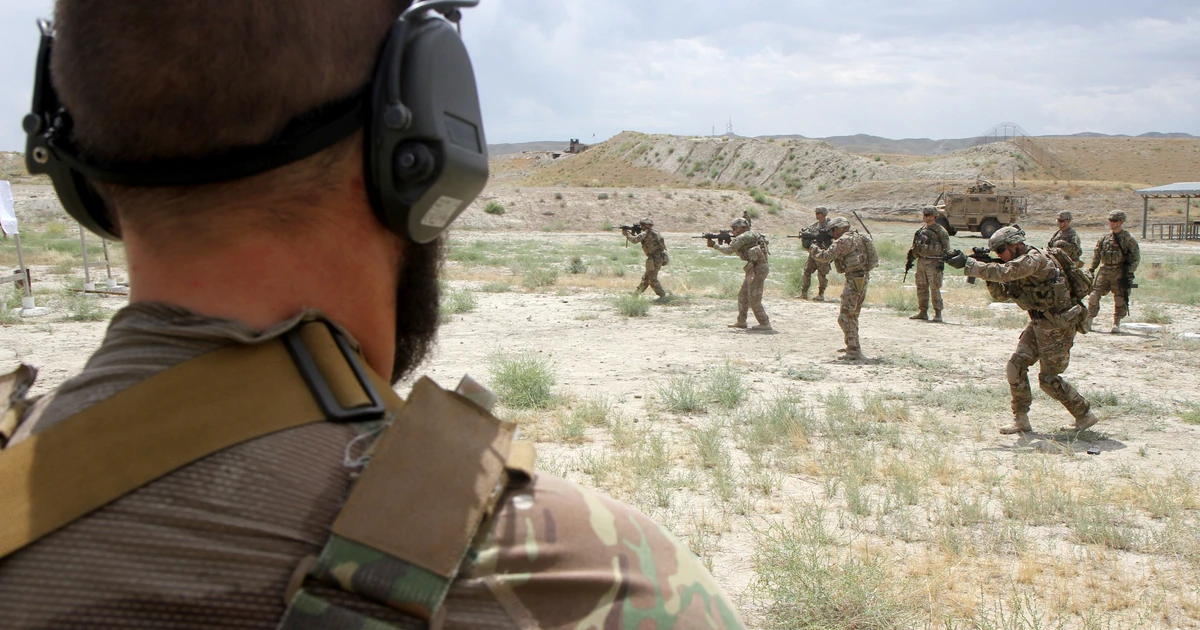
A key Republican senator wants President Joe Biden to leave a military force of about 1,000 troops in Afghanistan until early 2022 to minimize the “chaotic transition” expected when U.S. forces fully withdraw from the country.
“It would maintain a quick counterterrorism force as the political and security environment evolves; enable more-effective intelligence, surveillance and reconnaissance; help protect the U.S. Embassy … and allow more time to process visas for Afghans who assisted U.S. troops and now fear for their lives,” Sen. Jim Inhofe, R-Okla., and ranking member on the Senate Armed Services Committee, wrote in a Wall Street Journal editorial on Sunday.
The proposal comes just a few days after Defense Secretary Lloyd Austin, in testimony before Inhofe’s committee, expressed confidence in the withdrawal plans and American forces’ ability to provide logistics assistance and counter-terrorism support even after the pullout.
/cloudfront-us-east-1.images.arcpublishing.com/mco/5MLS3KHLGRHIZHQ3QXW3KM7RVU.jpg)
“I will just say that the president has been clear that our mission in Afghanistan has been accomplished,” Austin said. “Going forward, [our] counterterrorism efforts will be focused on elements that can possibly conduct attacks against our homeland. In terms of our efforts to establish over-the-horizon capability … we are doing a lot of things over the horizon now.”
In May, Biden announced plans to pull all U.S. forces out of Afghanistan by Sept. 11, ending the United States’ ground presence there after nearly 20 years.
Last week, U.S. Central Command officials said that work is already about 50 percent done, although officials have not released specific numbers on how many troops remain in the country. About 2,500 American troops were still stationed in Afghanistan as of this spring.
Inhofe, who has been publicly critical of the withdrawal plan, said in the editorial that “nobody wants to see U.S. troops in Afghanistan forever.” But he said a too-quick withdrawal could endanger allies and U.S. security interests in the region.
“This small contingent, for a limited time frame, would preserve air-transport capability in case Kabul International Airport is overrun,” Inhofe wrote. “The U.S. would be able to conduct a realistic assessment of how the security situation is evolving. It will help us understand whether the Taliban intends to meet its commitments.”
/cloudfront-us-east-1.images.arcpublishing.com/mco/HTWM5XA6ANFEBD6C275NARDQAA.jpg)
Austin has said that a contingent of U.S. military troops will remain in Afghanistan to help secure American diplomatic facilities there, though officials have not publicly disclosed the size of that force.
U.S. planners are also supplying funding to Afghan government officials to help support security forces, and Austin pledged a close relationship between the two countries moving forward, even as the military presence there disappears.
In an interview with Military Times last week, CENTCOM commander Marine Gen. Kenneth McKenzie Jr. said he believes U.S. forces will still be able to “keep pressure” on insurgent groups in the region even after the withdrawal. But any kinetic action will be limited to threats against the U.S. homeland, he said.
“When those entities present actionable threats against the United States, we’d be prepared to go in there and take action if our Afghan partners are unable to do that,” he said. “And that will be the limit of our kinetic actions in Afghanistan.”



Be the first to comment